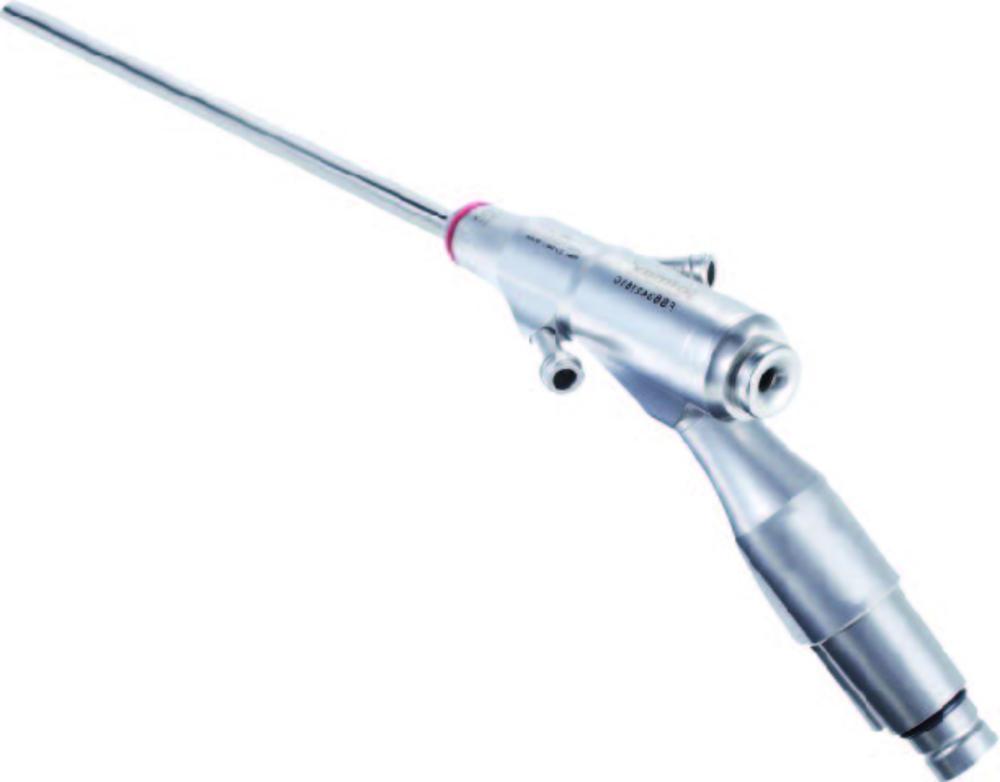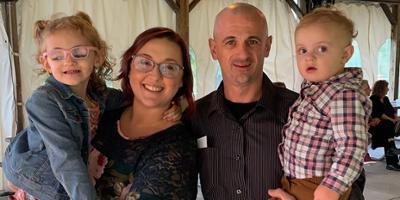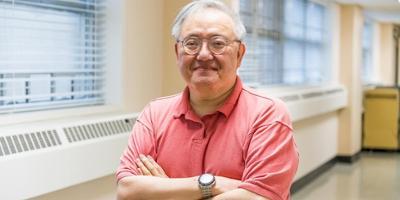Back in action
Surgeon’s minimally invasive spinal procedure usually
sends patients home within hours — and without pain
STORY BY JIM HOWE
PHOTOS BY SUSAN KAHN
Anyone can hurt their back by lifting something heavy. The resulting pain may come from a herniated disk, also called a slipped or ruptured disk. Some people whose injury does not heal become candidates for a surgery done through a tiny incision, with a quick recovery.
Over the summer of 2022, Upstate neurosurgeon Ali Hazama, MD, operated on Julia Blair, 22, now a senior majoring in psychology at SUNY Potsdam. Blair was amazed to be so quickly relieved of pain she had since fall 2021.
Blair, an attacker on the college’s women’s varsity lacrosse team, injured her back while deadlifting during a workout in November 2021. “I must have had the wrong form, or maybe too much weight,” she recalls. “I felt like I pulled something in my back, and a day later, I had shooting pains down my left leg,”
She waited. The pain did not go away. She saw a chiropractor, who had her do some exercises.
The pain persisted as the 2021 autumn training season gave way to the spring 2022 lacrosse season. Blair only played in a handful of her team’s 16 games. She saw a doctor who ordered an MRI scan of her back and referred her to Hazama for possible surgery.
Since Blair’s pain did not subside on its own, Hazama recommended a procedure called endoscopic lumbar diskectomy (see accompanying story, below). He showed Blair images of the spinal endoscopic tool he would use to remove the disk fragments that were pressing against a nerve and causing her pain.
The tool allows surgery with a tiny incision instead of a traditional, or open, surgery, which would require a much larger incision, then further cutting through large amounts of tissue to get to the problem area, with a lengthier and likely more painful recovery period.
“Endoscopic spine surgery is an ultra-minimally invasive technique that really is built around preserving normal body tissue and directly treating the problem without introducing any further damage to the body or the spine,“ Hazama explains.
“You save the patient the surgical pain, the pain that comes not just from the problem that someone comes in with, but from the actual cutting of normal tissue, that lasts for days to weeks after a traditional surgery,” Hazama says. “That’s why these patients are usually extremely happy with the results of the surgeries.”
Hazama, an assistant professor of neurosurgery, notes that this procedure cannot be used for all spinal problems. But in addition to herniated disks, it can relieve the pressure of spinal stenosis and be used to perform corrective procedures, such as spinal fusions, as well as spinal biopsies.
The thought of surgery scared Blair at first. “I was so nervous, and it ended up being like a piece of cake, and the doctor and all his staff there were incredible. They made me feel so good about having this done,” she says.
The surgery, which took place in May 2022 at Upstate, lasted less than an hour, and she went home within a few hours, which is typical for this procedure. She recalls feeling no pain on the three-hour car ride back to her home in Massena, including a stop for dinner.
“I was, like, instantly relieved,” she recalls. As she got up from the table after eating and walked to the car, she was thrilled to realize: “I don’t feel any pain.” Friends and family who had watched her struggle to put on her own socks saw a huge difference.
A follow-up exam a month later showed the operation had gone well, and Hazama said she could resume all her normal activities, including lacrosse, which she has done.
Hazama notes that over-the-counter pain medications are typically tried first, while waiting to see if the condition improves on its own, as was done with Blair. More than 80% of patients who come to him with back problems will have their problem resolved without undergoing surgery, a statistic he shares with pride.
But for those whose spinal problem doesn’t resolve by itself, endoscopic spinal surgery offers a route to getting back to one’s normal routine. This surgery has been around for years, but recent advances include high-definition images that display the patient’s anatomy in realistic detail to guide the surgeon, he says.
“It’s really a paradigm shift in terms of treating spine patients, where a lot of people think that spine surgery is extremely invasive, with months on end of pain after surgery.”
“Julia’s prognosis is that she’s basically back to normal and has no limitations.”
What is an endoscopic lumbar diskectomy?
 The endoscope device that provides images from inside the patient to the computer screen in the photo below.
The endoscope device that provides images from inside the patient to the computer screen in the photo below.This is a minimally invasive operation using an endoscope, a device with a pencil-sized tube, which a surgeon uses to insert tiny tools for cutting, removing and cauterizing tissue. A tiny camera and lights transmit high-quality images of the affected area to a computer screen.
Lumbar refers to the lower back.
A diskectomy is the removal of the damaged portion of a herniated disk. Disks are the rubbery cushions between the vertebrae, or stack of bones making up the spinal column, which surrounds and protects the nerve tissue of the spinal cord. When the outer wall of a disk dries out or weakens with age or injury, the soft, inner part bulges out, resulting in a herniated disk. This can press on nerve tissue and cause pain, tingling or weakness.
This article appears in the spring 2023 issue of Upstate Health magazine.
 Neurosurgeon Ali Hazama, MD, with a screen showing the image provided by the endoscopic device. Hazama specializes in endoscopic spinal surgeries, which minimize cutting, scarring, pain and time of recovery.
Neurosurgeon Ali Hazama, MD, with a screen showing the image provided by the endoscopic device. Hazama specializes in endoscopic spinal surgeries, which minimize cutting, scarring, pain and time of recovery.





